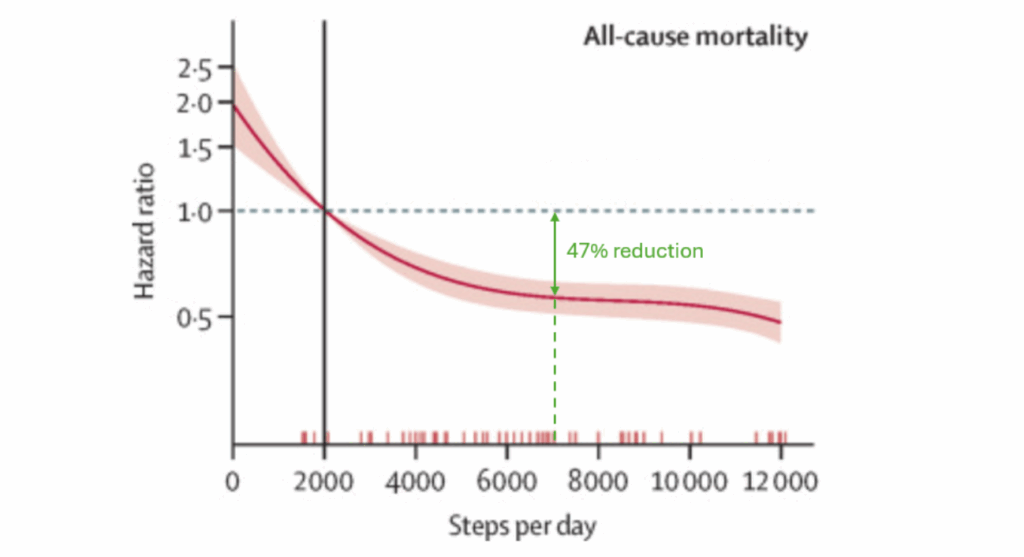There were multiple headlines recently claiming that, when it comes to counting steps, 7,000 should be the new 10,000.
They originated from research at the University of Sydney which analysed data from multiple studies. What they found was:
“For all-cause mortality, cardiovascular disease incidence, dementia, and falls, an inverse non-linear dose-response association was found, with inflection points at around 5000–7000 steps per day.”

And what that actually means is:
- The likelihood of all-cause mortality (death) reduces as step-count increases – but the relationship is not consistent. The incremental benefit you get from adding 1,000 steps gets smaller once you go over 7,000.
- When compared with 2,000 steps a day, walking 7,000 steps a day reduced the risk of death by 47 percent
- When compared with 7,000 steps a day, walking 10,000 steps a day reduced the risk of death by 10 percent
- Some specific conditions (cardiovascular disease mortality, cancer incidence, type 2 diabetes, and falls) reduced in likelihood up to 7,000 steps but, after that, the risk remained constant even with additional steps.
Key takeaways are:
- Whatever your starting point – the more steps the better
- 7,000 steps should be suggested as a more achievable target for those who would struggle to reach 10,000

